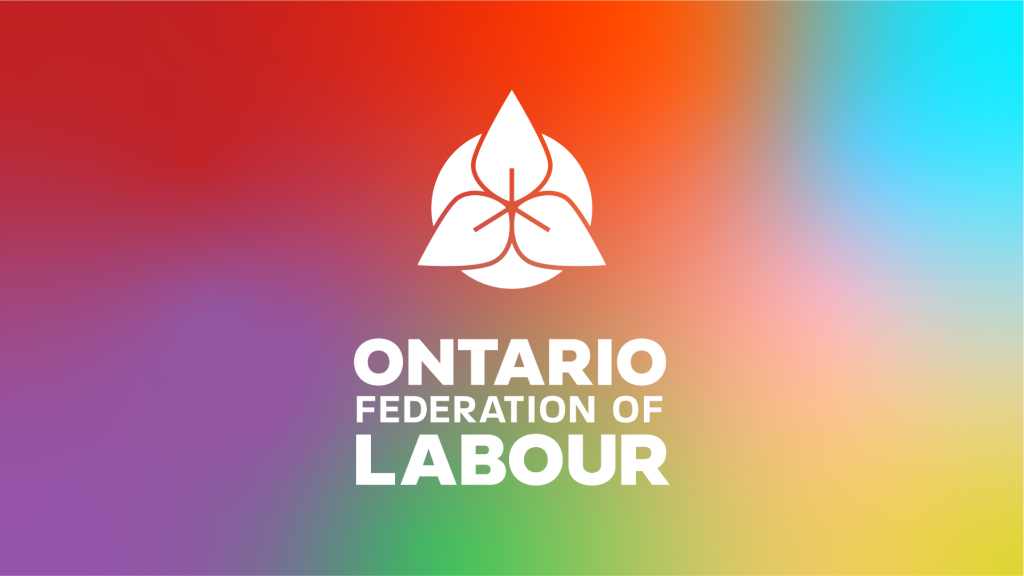
OFL STATEMENT
September 26, 2013
Women Workers Making History – Inside Unions and Out:
OFL Statement for Women’s History Month – October 2013
Many unions and federations now have policies that designate seats on leadership bodies for women and other equity groups. In Canada, this process began in 1983 when the Ontario Federation of Labour (OFL) broke new ground by amending its constitution to create five executive board positions for affirmative action seats.
In 1986, Sister Julie Davis (Canadian Union of Public Employees) was elected to the new position of OFL Executive Vice-President. Davis was the first women to be elected as a full-time Officer of Ontario’s labour movement.
The leadership role played by the OFL Women’s Committee was crucial to winning this first affirmative action policy. The Committee organized a grassroots campaign and promoted an analysis linking affirmative action in the workplace with affirmative action in their unions. In 1982, the OFL Women’s Committee drafted a discussion paper on affirmative action titled “Our Fair Share.”

The five newly-elected vice-presidents were (left to right): Carrol Anne Sceviour, United Steelworkers; Ev Sammons, Ontario Public Service Employees Union; Edith Johnston, United Auto Workers; Jean Robertson, United Food and Commercial Workers; Julie (Griffin) Davis, Canadian Union of Public Employees.
The 1982 OFL Convention adopted a policy statement on affirmative action which provided “a clear mandate for the OFL to embark on a major campaign both for mandatory affirmative action legislation and the promotion of women within union ranks.” In 1983, the Federation sponsored an Ontario-wide series of public forums on affirmative action which raised awareness of the size of discrimination faced by women in the workforce. The forums resulted in over 170 submissions. At the 1983 convention, the OFL amended its constitution to create five affirmative action positions on its Executive Board. In 1984, the OFL published a groundbreaking document called “Making Up the Difference”. The brief made over 40 recommendations to the government for legislative and other action to initiate equality measures for women.
The OFL continued to build diversity within it structure. At the 1987, the membership established a Visible Minority Vice-President and in 1997 an additional position was adopted for a lesbian or gay vice-president — another Canadian first. In the same year, Vice-Presidents’ positions were also established for Persons With Disability and Aboriginal Workers.
The demographic of union membership continues to shift dramatically to include a greater proportion of workers of colour; gay, lesbian, bisexual and transgendered workers; workers with disabilities; young workers and Aboriginal workers. Today the OFL Executive Board is a much stronger reflection of the diversity of Ontario’s workforce: 8 women affirmative action VPs; 2 workers of colour VPs; and VPs representing persons with disabilities, youth, LGBTQ and Aboriginal workers. Many OFL VPs representing unions are also members of equity-seeking groups.
These great strides are worth celebrating during Women’s History Month, as Ontario’s labour movement reflects on the progress it has made and the challenges ahead. Fighting for human rights, equity and social justice is an important part of the foundation of the union movement and the victories secured by unions continue to lead to the rising of everyone.
The Ontario Federation of Labour (OFL) represents 54 unions and one million workers in Ontario. For information, visit www.OFL.ca and follow the OFL on Facebook and Twitter: @OFLabour.
For further information:
Joel Duff, OFL Communications Director: 416-707-0349 (cell) or jduff@ofl-org.flywheelsites.com *ENG/FRENCH*
CS/JD/sf: cope343


